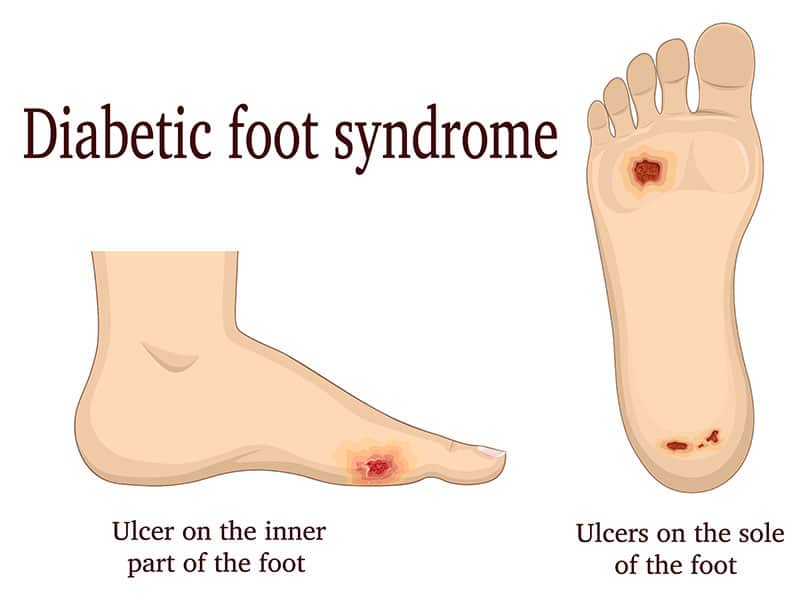5 Tips For the Diabetic Foot

People with diabetes need to be particularly vigilant when it comes to the health of their feet. Long term high blood glucose levels create a condition known as peripheral neuropathy. This means that the diabetic person has nerve damage to his/her extremities. Feeling in the feet(or hands)is severely diminished and may disappear altogether. The loss of feeling means that the diabetic foot can be injured(cut or burned)without there being any awareness of the incident. Because of poor circulation the injury does not heal well and may not heal at all. The consequences thereafter may be severe. Infection could cause the decay of soft tissue, leading to amputation or other life-threatening conditions, like sepsis. Here are 5 useful tips for the diabetic foot which will help to reduce the risk.
Check your feet daily. Look out for any change in colour, inflammation or deformity. Pain sensors may not be present in the diabetic foot, so it is most important that visual inspection is thorough. If any new symptoms are present contact your doctor immediately. Feel the foot for temperature change. Although the foot itself may be numb, your hands will not be. A hot foot may mean infection, an icy cold one, tissue damage.
Book a routine appointment with a Chiropodist at least once annually. They will be able to assist with a whole range of treatment and advice including; most appropriate footwear and nail care. Ingrown toenails are a significant source of infection and are particularly dangerous for the diabetic foot.
Be rigorous with foot hygiene. Bath your feet daily in soapy lukewarm water. Dry the feet well. Pay special attention to between the toes. Fungal infections love warm damp places. Moisturise after drying. Keeping the skin well hydrated helps slow the breakdown of tissue. Supple skin is less apt to crack or split.
Don’t walk barefooted inside or outside. The risk of stepping on a sharp object and creating a wound is too great when compared to putting on a pair of shoes. Make sure the shoes fit comfortably. Pay that bit extra. Get your feet measured. Buy a soft malleable pair, with good heel, ankle and arch support. Any sharp bits or poor fitting can cause rubbing and sores may develop.
The last tip is about general health, which absolutely relates to the well being of the diabetic foot. If you smoke, quit. Smoking has a well researched detrimental effect on the blood circulation. Poor circulation causes many leg and foot complications. Reduce weight. Obesity leads to an increase in fatty deposits which in time clog up the arteries, veins and smaller blood vessels. Try to exercise as much as possible. Daily walks are fine. Exercise helps to increase the blood flow not just centrally, but out to the extremities where it is much needed.








